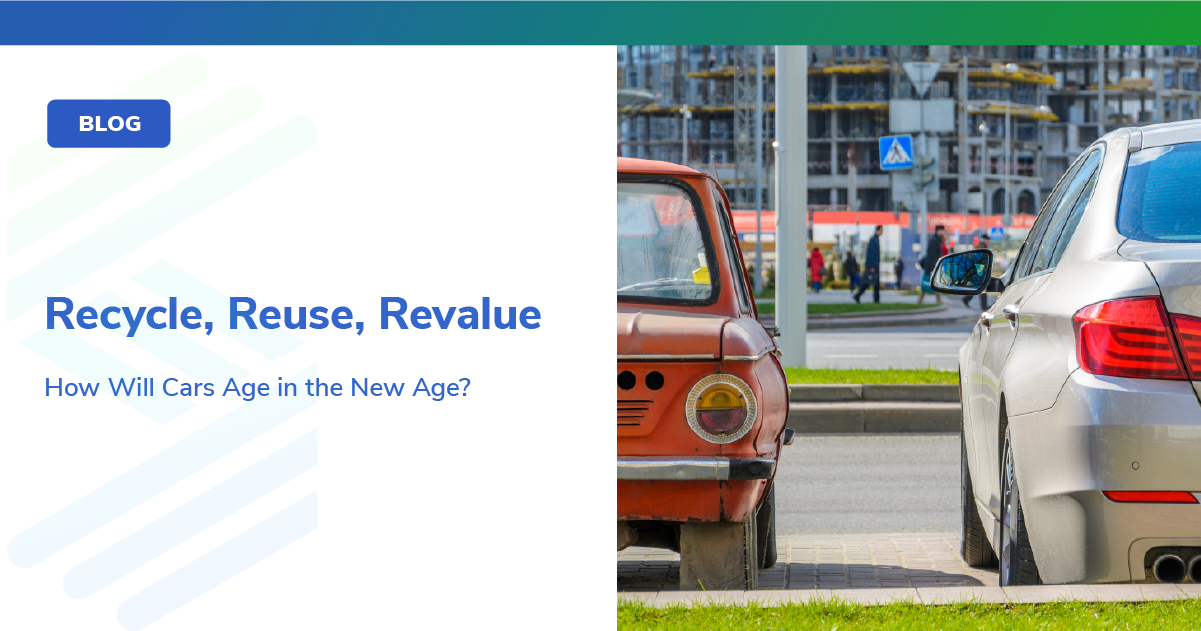
/
July 13, 2023
/
#
Min Read
How Will Cars Age in the New Age?
Picture this: you’re on your way to the dealership to buy a car, and you’re conflicted. You want a new car, with all its bells and whistles and its zingy look. But new cars are expensive. They start losing their value the second you leave the lot. And in a few years, it too will be out of date. So, you start thinking about buying a used car, but that seem to come with even more compromise. It doesn’t have the latest features, the technology is outdated, and there will most assuredly be signs of wear and tear.
If only you could have the best of both worlds: a used vehicle that felt new. That had all the latest bells and whistles. And most importantly, a vehicle that continued to improve over time. Now, it might sound like a pipe dream, but this is how cars will age in the new age.
When Cars Age Traditionally
Traditionally, vehicle maintenance has been based on a service calendar. After a certain number of months or miles, you take your vehicle to a dealer or mechanic to have the oil changed, parts swapped out, or software updates installed. The trouble with this type of approach is it’s an estimate, an arbitrary number based on guesswork. The truth is, vehicles don’t age universally.
Aging is impacted by a wide variety of things including, but not limited to, driver behavior, terrain, weather conditions, parking locations, and trip attributes (ie. highway miles versus city miles). A car that drives on the salted roads of Chicago is probably going to corrode faster than one that spends most of its time in a covered parking lot in Phoenix. This means that few vehicles actually receive maintenance at the optimal time or mileage and end up either over-serviced (at the owner’s expense) or under-serviced (exacerbating some maintenance issues). Additionally, there’s been no way to accurately track how driving behavior is impacting the vehicle’s health. For example, in the case of EVs, driving and charging habits can seriously damage the health and longevity of the battery.
Another aspect of vehicle aging is day-to-day wear and tear. Cola stains on the fabric seat, dents on the bumper, shopping cart scratches on the doors – all make a vehicle look and feel old and outdated. Current solutions to this include expensive paint jobs, replacing entire exterior panels, or… buying a new vehicle altogether. The point is, giving an older vehicle a facelift comes with a pretty high price tag.
The New Age of Vehicle Aging
The good news is that connectivity is already redefining the way vehicles age. Embedded solutions, like Sibros’ Deep Logger, can pull data directly from the vehicle’s electronic control units (ECUs). So, instead of guessing when a vehicle needs a tune-up, owners will know, based on real-time data. If the owner is unsure they can always summon the virtual mechanic to run a complete diagnostic check without having to go to the dealership. Owners can also track how their driving behaviors impact vehicle health and make changes to help increase their car’s lifespan. Meanwhile, OEMs can proactively identify bugs and software faults and neutralize them before they turn into expensive recalls and warranty issues.
Additionally, over-the-air (OTA) update technology enables on-demand feature upgrades and improvements. Solutions like Sibros’ Deep Updater allow OEMs to send safe, secure, and reliable remote updates to every ECU(from safety-critical updates to in-vehicle purchases). Customers don’t have to wait until their next vehicle purchase to upgrade to the latest features. Instead, they can subscribe and activate the feature with a remote update.
Vehicles are also aging more gracefully due to the adoption of more sustainable and reusable manufacturing processes. One of the least sustainable parts of the production process is painting the vehicle’s body. Some OEMs have adopted more environmentally friendly approaches that also simplify maintaining the vehicle’s appearance. This EV manufacturer integrates the dye directly into the polymer that composes the vehicle’s exterior. Got a scratch? Just buff it out. Other OEMs are looking into interchangeable vehicle interiors that give vehicle owners a more economical option for keeping things looking fresh, while also opening up a new revenue stream for the automaker.
The New Age of Vehicle Aging with Sibros
It will still be some time before every vehicle on the road is fully connected. And potentially even longer for all automakers to adopt sustainable and reusable manufacturing processes. However, the transition has already begun. We’re seeing certified used vehicles being sold with better warranties than their newer counterparts. We're seeing tools for second and third owners to make better purchase decisions, by providing insights on how that vehicle was used, including key components relating to the vehicle’s state of health. Mobile applications are helping customers maintain their vehicles better and giving them access to vehicle data that enhances the overall ownership experience. And more and more OEMs are trying to expand their OTA offerings or outsourcing third-party solutions that support updates beyond infotainment and navigation. Before we know it, buying a car will no longer be a matter of compromise, but of customization.
To learn more about how Sibros can help drive your fleet into the future, contact us today.













